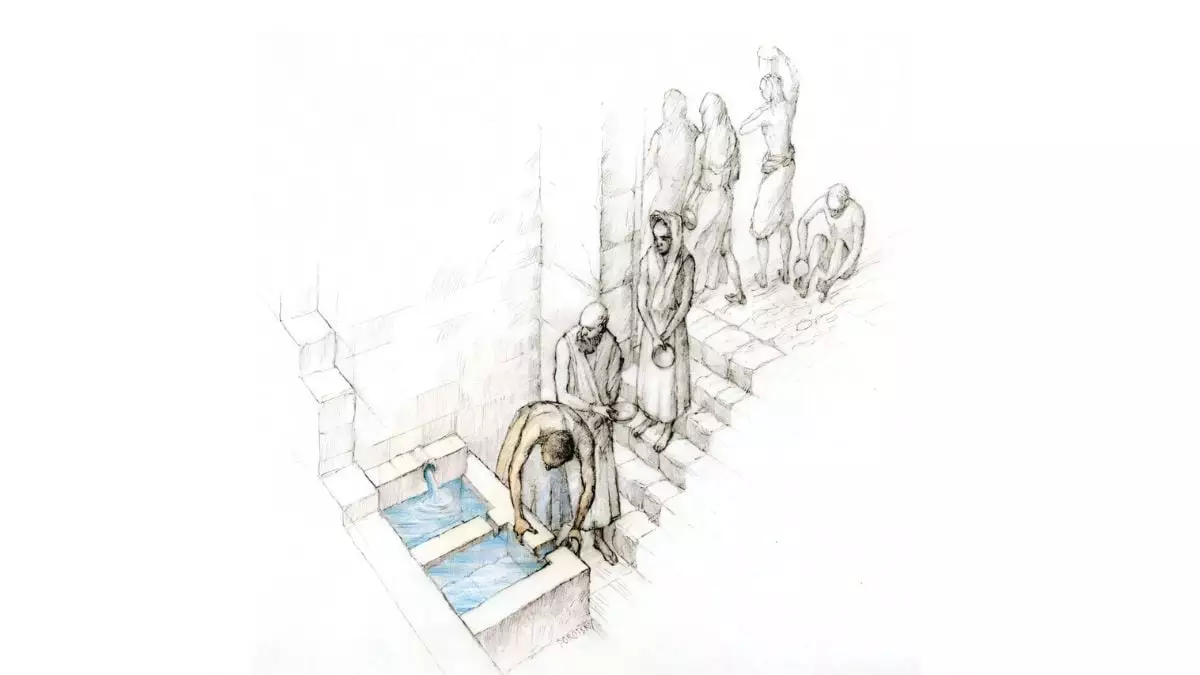Recent archaeological revelations from northern Israel’s Tel Dan sanctuary are reshaping our understanding of ancient religious practices. This site, which once hosted the rituals of the kingdom of Israel, features an extraordinary bathing facility that challenges our perceptions of ritual purification in ancient cultures. The discovery, detailed by Dr. Levana Tsfania-Zias, introduces us to an intriguing dimension of worship where water was not merely a symbol of cleanliness but a vital component of spiritual expression.
Complexity in Simplicity
Unlike other grand sanctuaries of the era that boasted luxurious accommodations for the elite, the modest two-part bathing unit at Tel Dan suggests a distinct ritual focus dedicated to the priestly class. The choice of yellow plaster for the dressing room and blue plaster for the basin signifies more than aesthetic preference; it illustrates the meticulous care invested in creating a sacred space meant for communion with the divine. The absence of heating in the bathing area serves to highlight an essential aspect of ritual purity—the idea that contact with cold, flowing water could signify a more profound spiritual awakening than a mere physical cleanse.
While modern visitors may conflate grandeur with significance, this find reaffirms that in the world of ancient worship, purity and sincerity took precedence over opulence. Worshippers stood in the chilly water, perhaps reflecting their own humility in the presence of a deity invoked within the walls of a temple dedicated to an obscure god, enshrined in history yet shrouded in mystery.
Echoes of a Past Civilization
The revelations at Tel Dan align with scholarly investigations into the interplay between worship practices and the socio-political landscape of the time. Inscriptions unearthed from previous excavations hint at complex interactions among entities worshipped across the region. This particular sanctuary may have attracted pilgrims from afar, drawn not only by the promise of purification but by the allure of a diverse community engaged in shared spiritual practices. The diverse ceramics found suggest cross-cultural exchanges that merit further inquiry.
In reflecting upon the continuities and disruptions of religious practices following the Seleucid destruction of the first temple, one recognizes a cultural resilience embedded within this site, as it pivoted toward new purposes during the Middle–Late Roman period. As pilgrims flocked to the Fountain House, they engaged in traditional acts of cleansing that echo biblical mandates for purity, thus creating a living tapestry of faith.
The Call for Deeper Understanding
Yet, as tantalizing as these findings may be, they beckon for more exploration and understanding. The discourse surrounding Tel Dan underscores the necessity of delving deeper into unfamiliar facets of ancient worship. What other deities inhabited these sacred spaces? What unique rituals have yet to be uncovered? Such inquiries are pivotal for grasping the rich tapestry of the ancient Near East, where the lines between the sacred and the mundane blur into a collective identity shaped by faith.
Dr. Tsfania-Zias’ findings at Tel Dan are not merely archaeological artifacts; they are a call to recognize and appreciate the subtleties of ancient belief systems, reminding us that the depth of ritual often resides not in grandiosity, but in the minutiae of daily devotion, which retain their resonance even today.


Leave a Reply